 In the days before remote controls you had to get out of your seat to make any adjustments to the television set such as adjusting the volume or changing the channel, etc., with the earliest televisions often only being capable of receiving one or two TV channels that were pre-defined for a particular transmitter by the supplying dealer if not done so at the factory.
In the days before remote controls you had to get out of your seat to make any adjustments to the television set such as adjusting the volume or changing the channel, etc., with the earliest televisions often only being capable of receiving one or two TV channels that were pre-defined for a particular transmitter by the supplying dealer if not done so at the factory.
 These manual controls often had a great tactile feel to them, especially the VHF channel selector which usually clicked when the knob was turned, and there were numerous other controls for picture adjustment (usually concealed at the sides or rear) which occasionally had to be adjusted due to valve-based circuitry drifting out of alignment, hence the importance of the test card and tuning signal broadcasts prior to the 1980s because they were used to correctly set up a television receiver.
These manual controls often had a great tactile feel to them, especially the VHF channel selector which usually clicked when the knob was turned, and there were numerous other controls for picture adjustment (usually concealed at the sides or rear) which occasionally had to be adjusted due to valve-based circuitry drifting out of alignment, hence the importance of the test card and tuning signal broadcasts prior to the 1980s because they were used to correctly set up a television receiver.
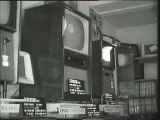
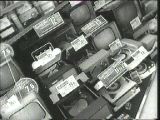
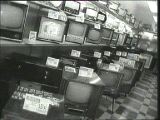
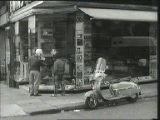 So what were the shops that sold televisions like in the 1950s? The pictures above show a typical example – this was the era before the advent of the big superstore, so lots of receivers were packed into a relatively small shop space (though some department stores also sold televisions, of course). The brand names are mainly unfamiliar, and there’s a complete absence of anything resembling a video recorder. Only one set is showing a picture, and it is Test Card C which was a very common daytime sight in this period.
So what were the shops that sold televisions like in the 1950s? The pictures above show a typical example – this was the era before the advent of the big superstore, so lots of receivers were packed into a relatively small shop space (though some department stores also sold televisions, of course). The brand names are mainly unfamiliar, and there’s a complete absence of anything resembling a video recorder. Only one set is showing a picture, and it is Test Card C which was a very common daytime sight in this period.
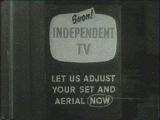 The dawn of commercial television (ITV) in 1955 – TV shops in the London and Midlands had signs like this one in the window as retailers promoted the forthcoming ITV service.
The dawn of commercial television (ITV) in 1955 – TV shops in the London and Midlands had signs like this one in the window as retailers promoted the forthcoming ITV service.
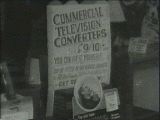 If you already had a TV set and wanted ITV as well…prepare to be converted – at a price, of course. In front is a card promoting Ferguson TV’s. “Fine sets those Ferguson’s” was the slogan used at the time.
If you already had a TV set and wanted ITV as well…prepare to be converted – at a price, of course. In front is a card promoting Ferguson TV’s. “Fine sets those Ferguson’s” was the slogan used at the time.
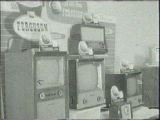 And talking of Ferguson, here’s a selection of Ferguson TV’s and radio’s from the mid 1950s. Ferguson were taken over by the Thorn-EMI empire, which then sold the brand to Thomson (100% owned by the French government), though Thomson has now ceased to exist in the UK. Brands like Alba, Bush and Murphy are now the preserve of retailers and mail order catalogues who basically just use the name for their own-branded products.
And talking of Ferguson, here’s a selection of Ferguson TV’s and radio’s from the mid 1950s. Ferguson were taken over by the Thorn-EMI empire, which then sold the brand to Thomson (100% owned by the French government), though Thomson has now ceased to exist in the UK. Brands like Alba, Bush and Murphy are now the preserve of retailers and mail order catalogues who basically just use the name for their own-branded products.
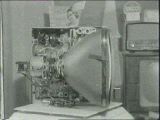 There were many more brands of television prior to the 1980s, most of which have long since disappeared altogether or absorbed into multinational companies. Here is a picture of the innards of an Ekco television of the mid 1950s.
There were many more brands of television prior to the 1980s, most of which have long since disappeared altogether or absorbed into multinational companies. Here is a picture of the innards of an Ekco television of the mid 1950s.
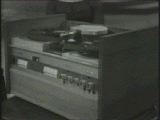 Moving forward ten years to 1965, and the introduction of one of the first ‘affordable’ video tape recording machines – the Philips EL3400. It was bulky and used an exposed reel of tape, plus it only recorded in black and white despite colour transmissions being available not long afterwards. It also had no tuner or timer facility, so it was only useful with (sometimes) expensive external ancillary equipment such as a separate television tuner or video camera. However, two years before the EL3400 there was a British recorder advertised for sale called the Telcan that was possibly the world’s first domestic video recorder. It could record approximately 20 minutes of 405 line video and audio onto audio tape; a remarkable feat for relatively primitive technology but was a commercial failure presumably due to the short length of its recordings. Only two examples of the Telcan are known to exist nowadays.
Moving forward ten years to 1965, and the introduction of one of the first ‘affordable’ video tape recording machines – the Philips EL3400. It was bulky and used an exposed reel of tape, plus it only recorded in black and white despite colour transmissions being available not long afterwards. It also had no tuner or timer facility, so it was only useful with (sometimes) expensive external ancillary equipment such as a separate television tuner or video camera. However, two years before the EL3400 there was a British recorder advertised for sale called the Telcan that was possibly the world’s first domestic video recorder. It could record approximately 20 minutes of 405 line video and audio onto audio tape; a remarkable feat for relatively primitive technology but was a commercial failure presumably due to the short length of its recordings. Only two examples of the Telcan are known to exist nowadays.
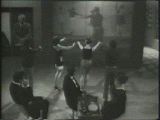 Compared to the Telcan, the EL3400 was a greater success and certainly had its uses, as a group of dancers watch themselves perform on a large video projection screen. The EL3400 did not come cheap because it used a helical scan recording technique also used by professional recorders like the Ampex Quadraplex (the world’s first broadcast quality video recorder), so it was typically found only in large education establishments or used for industrial applications. Also Japanese companies such as Shibaden and Sony were starting to make their presence felt at this time with recorders like the CV-2000 format reel to reel machines which were soon followed by the U-Matic video cassette that proved popular in the industrial and commercial markets.
Compared to the Telcan, the EL3400 was a greater success and certainly had its uses, as a group of dancers watch themselves perform on a large video projection screen. The EL3400 did not come cheap because it used a helical scan recording technique also used by professional recorders like the Ampex Quadraplex (the world’s first broadcast quality video recorder), so it was typically found only in large education establishments or used for industrial applications. Also Japanese companies such as Shibaden and Sony were starting to make their presence felt at this time with recorders like the CV-2000 format reel to reel machines which were soon followed by the U-Matic video cassette that proved popular in the industrial and commercial markets.
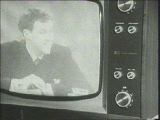 The common face of television in the mid to late 1960s – black and white, dual standard (though lots of single-standard 405 line VHF-only televisions remained in use for many years) with separate controls for 405-line VHF and 625-line UHF transmissions. This was required since from 1964 the new BBC2 service was only available on UHF.
The common face of television in the mid to late 1960s – black and white, dual standard (though lots of single-standard 405 line VHF-only televisions remained in use for many years) with separate controls for 405-line VHF and 625-line UHF transmissions. This was required since from 1964 the new BBC2 service was only available on UHF.
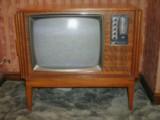 1967 saw the arrival of the first mass produced colour TV’s for the UK market, though their high price and initial lack of colour programming (BBC2 only until 1969, few transmitters provided a colour signal and not all programmes were in colour) ensured slow sales to begin with. The picture shows an HMV Colourmaster which was typical of the sets produced in the late 1960s. Find out more about early colour television on the Colour Television page.
1967 saw the arrival of the first mass produced colour TV’s for the UK market, though their high price and initial lack of colour programming (BBC2 only until 1969, few transmitters provided a colour signal and not all programmes were in colour) ensured slow sales to begin with. The picture shows an HMV Colourmaster which was typical of the sets produced in the late 1960s. Find out more about early colour television on the Colour Television page.
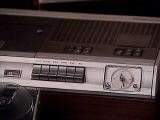 Fast forward to 1972 – though a few lucky buyers may have had access to one in 1971 – and the launch of the first ‘proper’ ‘home’ video recorder with an integrated tuner and timer, the Philips N1500. This close-up view (disregard the Sony machine just visible) shows the sloping front panel with (from left to right) a recording level meter, tape transport controls, and the 1 day, 1 event ‘egg timer’ clock. Each large Philips VCR cassette could record up to 30 or 60 (later 80) minutes; the six channel selector buttons are visible above the transport controls. The only thing to put off a potential purchaser – apart from the relatively short running time – was the steep price tag. However the N1500 was not generally available until the end of 1973; earlier it was only sold to schools and corporate customers, and these customers remained the main purchasers of such an expensive device. The less than 90 minutes maximum recording time would have limited its appeal to wealthy people who weren’t interested in recording long movies, therefore it tended to be only specialist shops and upmarket department stores that stocked the recorder.
Fast forward to 1972 – though a few lucky buyers may have had access to one in 1971 – and the launch of the first ‘proper’ ‘home’ video recorder with an integrated tuner and timer, the Philips N1500. This close-up view (disregard the Sony machine just visible) shows the sloping front panel with (from left to right) a recording level meter, tape transport controls, and the 1 day, 1 event ‘egg timer’ clock. Each large Philips VCR cassette could record up to 30 or 60 (later 80) minutes; the six channel selector buttons are visible above the transport controls. The only thing to put off a potential purchaser – apart from the relatively short running time – was the steep price tag. However the N1500 was not generally available until the end of 1973; earlier it was only sold to schools and corporate customers, and these customers remained the main purchasers of such an expensive device. The less than 90 minutes maximum recording time would have limited its appeal to wealthy people who weren’t interested in recording long movies, therefore it tended to be only specialist shops and upmarket department stores that stocked the recorder.
The N1500 was replaced by the N1502 in 1976, which was basically an updated N1500 with a more modern case, a digital timer and a few extra features like a ‘Stop motion’ button which froze the picture on-screen. Indeed the N1502 looked almost identical to the forthcoming N1700 which was known to be in development at the time, so the N1502 was probably produced as a stop-gap.
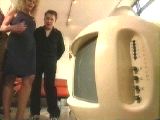
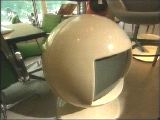
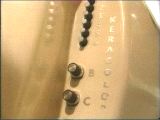
Space oddity…Anyone who walked into the television department of a large upmarket department store (such as Harrods in London) in the 1970s may have been confronted with this space helmet-shaped television known as the Keracolor. This rare model is a design classic, and with 1970s style back in fashion a reconditioned Keracolor retailed in 1998 for as much as £800. Produced in Northwich, Cheshire, there were colour and monochrome versions as well as a smaller portable version, and at least the colour sets used a Decca chassis supported by stickle bricks. (Yes, stickle bricks!) The Keracolor brand was revived much more recently but sadly failed to make a discernible impact on the television world, even minus the stickle bricks.

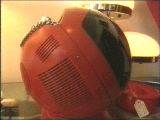
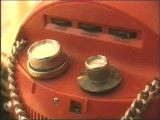
Send in the clones…the 1970s saw the rise of Japanese manufacturers in Europe and elsewhere, displacing many established companies both in the UK and abroad. Many of the Japanese products from this period were heavily influenced by European models; the JVC Videosphere pictured here being another helmet-based design. The right-hand picture shows the set’s controls – the thumbwheel controls (from left to right) are for brightness, contrast, and off-on/volume, plus rotary VHF and UHF tuning controls. The example shown here is rare since this monochrome TV usually had an orange casing; even so, compared to the Keracolor it is relatively affordable with a 1998 price of £330. Incidentally, the pictures of both this and the Keracolor were taken from BBC Two’s The Antiques Show.
1976 was the year that teletext receivers were sold in UK shops for the very first time, enabling news and information to be displayed on a television screen at a push of a button, but they still weren’t widely available for at least another year. There had been a public teletext service operational since September 1974, but at the start there were only three teletext receivers in existence and they couldn’t be bought in shops, though an electronics magazine published a guide to building your own teletext decoder in 1975 for those who were technically proficient enough to build one from scratch. The Labgear external decoder was the first to be manufactured and sold to the public, with four channels selectable using push buttons on the front panel and a wired remote control used to select pages and other teletext features such as hold and reveal.
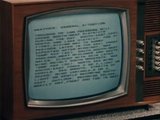 CEEFAX had been demonstrated by the BBC to the public as early as a news report on 23 October 1972, but IBA engineers had been independently working on their own ORACLE system therefore it took two years for the two incompatible systems to be reworked into a single standard known as teletext and for broadcasts to commence, with the acronyms CEEFAX and ORACLE being used as the two brand names for the BBC and IBA (ITV) services using the same teletext standard. The falling price of digital electronics made teletext much more affordable during the 1980s and proved to be popular in the UK, remaining in use until it was made obsolete by the analogue TV transmission switch off.
CEEFAX had been demonstrated by the BBC to the public as early as a news report on 23 October 1972, but IBA engineers had been independently working on their own ORACLE system therefore it took two years for the two incompatible systems to be reworked into a single standard known as teletext and for broadcasts to commence, with the acronyms CEEFAX and ORACLE being used as the two brand names for the BBC and IBA (ITV) services using the same teletext standard. The falling price of digital electronics made teletext much more affordable during the 1980s and proved to be popular in the UK, remaining in use until it was made obsolete by the analogue TV transmission switch off.
1977 saw the mass market arrival of a piece of technology that would prove to be very popular for more than 20 years and is still used by many people today, the VCR… (Pictures copyright: Philips Electronics.)
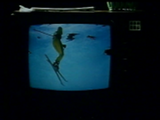

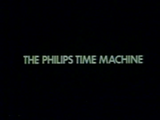
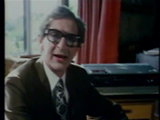
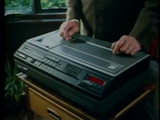 Before the video cassette recorder (VCR) became popular during the 1980s, it was necessary to explain to potential customers exactly what a VCR was and what it could actually do, and those potential customers may not be mechanically-minded either, so the best person to explain what a VCR did in layman’s terms is someone who is recognisably an expert in television but who isn’t necessarily an expert in things mechanical, namely someone like the writer and presenter Denis Norden, therefore Philips were extremely lucky to be able to have Norden present their promotional video demonstrating the benefits of their brand new N1700 VCR. It’s interesting that Philips chose to describe their VCR as simply a “Time Machine” as opposed to a “Television Time Machine” which would have been a much more precise description of what it could do if perhaps a less eye-catching expression.
Before the video cassette recorder (VCR) became popular during the 1980s, it was necessary to explain to potential customers exactly what a VCR was and what it could actually do, and those potential customers may not be mechanically-minded either, so the best person to explain what a VCR did in layman’s terms is someone who is recognisably an expert in television but who isn’t necessarily an expert in things mechanical, namely someone like the writer and presenter Denis Norden, therefore Philips were extremely lucky to be able to have Norden present their promotional video demonstrating the benefits of their brand new N1700 VCR. It’s interesting that Philips chose to describe their VCR as simply a “Time Machine” as opposed to a “Television Time Machine” which would have been a much more precise description of what it could do if perhaps a less eye-catching expression.
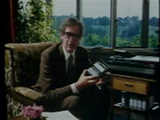 The N1700 recorded television broadcasts onto the same size cassette tapes as the N1500, with up to 2 hours of record and play time initially available (Long Play = LP) compared to the 1 hour duration offered by the earlier N1500 series machines (including the N1502 which looked very similar to the N1700); this was achieved by slowing the tape speed down and using improved electronics, therefore recordings were incompatible between VCR-LP and the earlier VCR machines. Even longer tapes were later introduced, enabling 3 hours of recording time on VCR-LP recorders in order to compete with the new VHS and Betamax recorders offered by Japanese manufacturers that were launched in the UK during 1978. (Betamax and VHS had already launched in Japanese/US NTSC markets; 1975 for Betamax and 1976 for VHS respectively, so Philips knew that competition for their product was soon to appear in Europe.)
The N1700 recorded television broadcasts onto the same size cassette tapes as the N1500, with up to 2 hours of record and play time initially available (Long Play = LP) compared to the 1 hour duration offered by the earlier N1500 series machines (including the N1502 which looked very similar to the N1700); this was achieved by slowing the tape speed down and using improved electronics, therefore recordings were incompatible between VCR-LP and the earlier VCR machines. Even longer tapes were later introduced, enabling 3 hours of recording time on VCR-LP recorders in order to compete with the new VHS and Betamax recorders offered by Japanese manufacturers that were launched in the UK during 1978. (Betamax and VHS had already launched in Japanese/US NTSC markets; 1975 for Betamax and 1976 for VHS respectively, so Philips knew that competition for their product was soon to appear in Europe.)
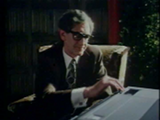

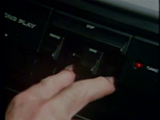
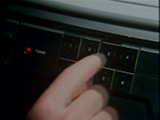
So using the N1700 is as straightforward as: (a) Switching it on; (b) Selecting a TV channel to record from, using the buttons marked 1 to 8; (c) Press the Record and Play buttons down together to start the recording; (d) Press the Stop button to stop the recording. Simple! (The N1500 was nearly as easy to use with perhaps the added complication of setting an audio record level control.)
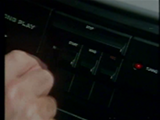 Just like the earlier N1500/N1502 models, the N1700 VCR recorded television broadcasts onto removable cassette tapes, therefore you had to have inserted a tape into the machine in the first place and ensured that there was enough free space on the tape for a new recording, if necessary rewinding the tape to a suitable point (or the beginning) as shown here, but anyone already familiar with audio cassette recording as most people were at that point during the 1970s would instinctively understand such concepts even if people under the age of 25 nowadays would be even more clueless about VCR’s as the average person would have been in the 1970s. The N1700 did the job it was designed to do on a basic level, but it had no remote control and no picture search facility so you had to make use of a mechanical tape counter and/or the tape compartment window to work out exactly how much tape was left for recording/playback.
Just like the earlier N1500/N1502 models, the N1700 VCR recorded television broadcasts onto removable cassette tapes, therefore you had to have inserted a tape into the machine in the first place and ensured that there was enough free space on the tape for a new recording, if necessary rewinding the tape to a suitable point (or the beginning) as shown here, but anyone already familiar with audio cassette recording as most people were at that point during the 1970s would instinctively understand such concepts even if people under the age of 25 nowadays would be even more clueless about VCR’s as the average person would have been in the 1970s. The N1700 did the job it was designed to do on a basic level, but it had no remote control and no picture search facility so you had to make use of a mechanical tape counter and/or the tape compartment window to work out exactly how much tape was left for recording/playback.
 The N1700 did have a basic digital timer capable of recording one programme that had a start time at some point during the next three days, which at least was an improvement over the first Philips VCR N1500 that could only manage a recording start time during the next 24 hours (and was a mechanical timer similar to that used on an old cooker); the N1700 timer was set using a sliding control which was moved one step at a time from left to right, setting the day, start time, and programme duration in that order. Simple and relatively foolproof if not the last word in sophistication, but anything more complex would have made the N1700 too expensive when Philips was trying to keep the overall product cost down.
The N1700 did have a basic digital timer capable of recording one programme that had a start time at some point during the next three days, which at least was an improvement over the first Philips VCR N1500 that could only manage a recording start time during the next 24 hours (and was a mechanical timer similar to that used on an old cooker); the N1700 timer was set using a sliding control which was moved one step at a time from left to right, setting the day, start time, and programme duration in that order. Simple and relatively foolproof if not the last word in sophistication, but anything more complex would have made the N1700 too expensive when Philips was trying to keep the overall product cost down.
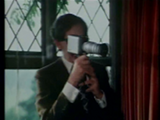 If you were really wealthy in the 1970s, you could not only afford a VCR but also have the disposable income to buy an optional camera to plug in the back of it, meaning that you could record home movies on your VCR as long as the lead between camera and VCR was long enough to reach where you wanted to record; fine for recording children playing in the living room or perhaps in the garden from the patio but useless for many other parts of the house or outside. Also the cheap cameras only recorded in black and white, therefore colour recording required additional expense as well as good lighting because the camera tubes weren’t very sensitive to light, so that candlelit dinner party recording may turn out to be a complete washout unless very bright lights were used.
If you were really wealthy in the 1970s, you could not only afford a VCR but also have the disposable income to buy an optional camera to plug in the back of it, meaning that you could record home movies on your VCR as long as the lead between camera and VCR was long enough to reach where you wanted to record; fine for recording children playing in the living room or perhaps in the garden from the patio but useless for many other parts of the house or outside. Also the cheap cameras only recorded in black and white, therefore colour recording required additional expense as well as good lighting because the camera tubes weren’t very sensitive to light, so that candlelit dinner party recording may turn out to be a complete washout unless very bright lights were used.
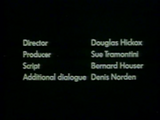
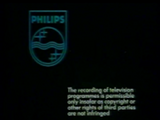
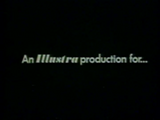
Denis Norden not only presented the promotion but contributed to its script, being a famous scriptwriter himself having worked alongside Frank Muir amongst others in the past, and this showed in the humourous touches employed including various interactions with his wife (whom you don’t actually see), such as getting ready to go out therefore being able to set the VCR to record something whilst away, etc.; this promotion wasn’t just a factual explanation of how to use a video cassette recorder.
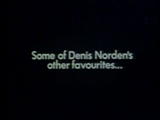

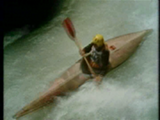
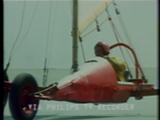
After the practical lesson there were three films intended to be shown in shops for demonstration purposes; skiing, canoeing and land yachting. The skiing film had an accompanying musical soundtrack (Psyche Rock by Pierre Henry) whilst the others featured a natural soundtrack, though there’s another version of the canoeing film with Psyche Rock music also used as a shop demonstration for the N1700.
Grundig produced its own SVR format based on Philips VCR-LP tapes but offering even longer recording times, though it wasn’t popular due to poor availability combined with a near absence of pre-recorded tapes. By 1978 the Japanese-developed Betamax (Sony) and VHS (JVC) videotape formats reached the UK, both offering longer recording times and a wider choice of recorders from different manufacturers compared to Philips’s VCR-LP format. Philips countered by offering a 3 hour tape for the N1700 and the Philips recorder was still the best-selling VCR in 1979 despite the new competition. Philips was also developing a new Video 2000 tape format which unfortunately didn’t reach the market until 1980 when VHS in particular was rapidly becoming established due to greater support from dealers and popularity with schools.
